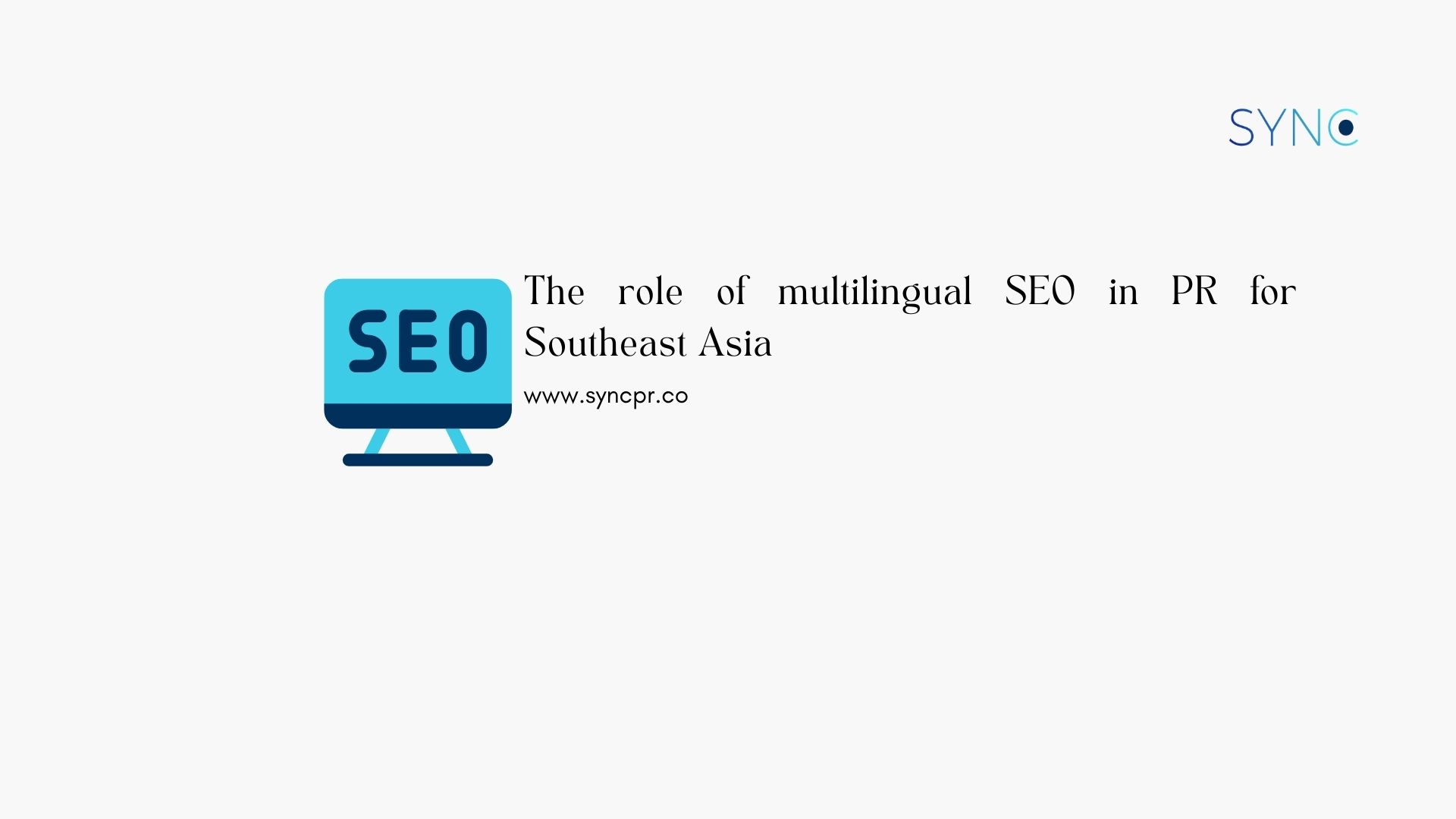What is multilingual SEO and is it necessary? Reaching the right audience is paramount for any successful PR campaign. But in a region as diverse as Southeast Asia, with a multitude of languages and cultural nuances, a one-size-fits-all approach simply won’t cut it. This is where multilingual SEO steps in, acting as a powerful bridge that connects your brand with potential customers across borders. Companies targeting SEA can reach 75% more internet users by offering content in languages other than English. This approach ensures broader market penetration and better engagement with local audiences.
Multilingual SEO is the practice of optimising your website and online content for search engines in multiple languages. It goes beyond simple translation, taking into account local search behaviour, cultural references, and preferred keywords. Let’s consider Singapore, a prime example of Southeast Asia’s multilingual landscape. With English, Mandarin, Malay, and Tamil as official languages, a single English website might miss a significant chunk of the population. Multilingual SEO allows you to target these diverse segments in their native languages, maximising your reach and brand awareness.
Why is multilingual SEO important?
The statistics speak for themselves, in Singapore, the number one reason for using the internet (at 62.7%) is to find information. A vast majority of Singaporeans depend on search engines to research products and make purchasing decisions. This digitally savvy demographic, particularly those aged 25-34 (known to be big spenders), presents a golden opportunity for businesses. Local SEO becomes even more crucial when considering the rise of “near me” searches, which have doubled on Google in the past year.

The importance of multilingual SEO is further amplified when you consider the sheer size of the digital advertising market in Southeast Asia. With Singapore alone boasting a search advertising market exceeding US$603 million in 2023, effectively targeting this audience through their preferred languages becomes crucial. By implementing multilingual SEO, you gain a competitive edge in this massive market, ensuring your brand voice resonates with potential customers across the region.
Setting up a multilingual SEO for your brand
Effective multilingual SEO for Southeast Asia starts with understanding your target audience. Dive deep into the demographics, search habits, and cultural nuances of each market – from Singapore’s tech-savvy millennials to Thailand’s reverence for hierarchy. This research allows you to identify relevant keywords and tailor content that speaks directly to their needs.
Localisation is your secret weapon. Don’t just translate your website; adapt it for each region. This means using the local currency (Singapore Dollars, Thai Baht, etc.), adjusting measurements (kilometres to miles), and incorporating culturally relevant references. Imagine using American football analogies to market a product in Malaysia – it would not resonate. Ensure each localised version adheres to technical SEO best practices by optimising page titles, meta descriptions, and image alt tags with relevant keywords in the target language and researching local search trends to gain valuable insights.
5 different types of multilingual SEO
- Language-specific content optimisation – Craft high-quality, original content tailored for each target language and become a wordsmith in each market. This includes using keyword-rich titles, headers, and descriptions throughout the text.
- Hreflang tags – These are HTML tags that tell search engines which version of a webpage is meant for which language and region. By using hreflang tags correctly, you ensure search engines understand your content and deliver it to the right audience.
- Country-specific domains or subdomains – Creating these domains allows you to laser-focus your website on each market. While separate domains exist (e.g., .sg for Singapore), Southeast Asia often utilises subfolders within the main domain for regional targeting. For instance, a Singapore subfolder with subfolders for each language (English, Mandarin, etc.).
- Internationalisation – This is all about cultural sensitivity. This means adapting to various character sets, date formats, and currency symbols. Remember, a website optimised for American users might not translate well for someone in Indonesia.
- Localised link building – Don’t underestimate the power of local connections. Secure backlinks from well-respected websites and directories in each region. Network with local bloggers and influencers to build relationships and spread brand awareness within those communities. By becoming a part of the local online ecosystem, you’ll gain trust and climb the search engine rankings in each market.
What is the difference between multilingual and regular SEO?
Regular SEO optimises a website for a single language and region, but multilingual SEO tackles a global audience. It requires in-depth research on keywords for each target language, along with translated and localised content. Special tags (hreflang) guide search engines to the right language version, and some strategies even involve creating region-specific website sections (subdomains) or backlinks from local sources. In short, multilingual SEO is a comprehensive approach to reach and function in multiple markets speaking different languages.
What are the benefits of using multilingual SEO?
Multilingual SEO unlocks a world of benefits for your business. By speaking your customers’ language, you build trust and increase engagement, leading to more conversions. But that’s not all – search engines love multilingual sites, as they recognise and prioritise websites that cater to users in their preferred language, which boosts your organic ranking and visibility in international searches. Ultimately, it fosters inclusivity and strengthens your brand reputation, making you a more accessible and attractive option for a global audience.
Maximise your PR potential
Multilingual SEO ensures your brand isn’t lost in translation. By speaking directly to your target audience in their preferred language, you build trust, establish credibility, and ultimately drive more qualified traffic to your website. This targeted approach translates to increased brand visibility, higher conversion rates, and a wider customer base across Southeast Asia’s flourishing online market. So, the next time you plan a PR campaign, remember – multilingual SEO is your key to unlocking the full potential of this vibrant and diverse region.
If you are unsure about how to maximise PR opportunities and ensure your message resonates with people from all corners of the world, drop us an email at hello(a)syncpr.co to find out more.

